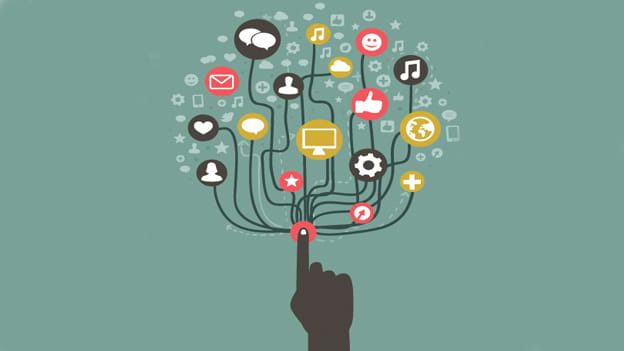Who will disrupt the HR function?

Most HR leaders do not craft social, recruiting & employer brand building strategies in detail as they do not understand the nuances of this market
Every pain point is an opportunity to innovate. Is it about the way the new employees are onboarded?
Blockbuster, which had more than 9,000 retail stores across America just nine years ago, closed the few hundred video-rental stores last November in a long-expected announcement. The little blue boxes that Blockbuster VHS tapes and DVDs came in had come to represent a way of life. There was another company that used to send out DVDs in the mail, in little red envelopes. They are thriving. They are Netflix.
Blockbuster was a pioneer and was synonymous with DVD and VHS tape rental. It was a weekly ritual to follow. Blockbuster made money through the late fees that it levied when the customers forgot to return the DVD they had rented. In 2000, Blockbuster collected nearly $800 million in late fees, accounting for 16 per cent of its revenue. It was natural to miss the upstart called Netflix that immediately appealed to Blockbuster customers longing for another choice: Monthly subscription plans that allowed households to keep up to several DVDs at a time without incurring late fees.
While Blockbuster is gone, Netflix has grown because they keep revisiting the answer to the question, “What business are we in?”
They may have started their business delivering DVDs, but quickly moved to redefine their business as delivering movies over the net and cable. As customers started to enjoy the convenience of being able to watch the movies from the comfort of their home, Netflix started to understand its customers better. They used a predictive analytics engine at the backend to predict what movies you are likely to enjoy given your past movie-watching pattern. Netflix awarded a $1 million prize to a developer team in 2009 for an algorithm that increased the accuracy of the company’s recommendation engine by 10 per cent. Digitization of the movie watching experience made this possible.
Who or what will have the potential to be a disruptor for the HR function? Firms are under continuous pressure to keep down costs in order to stay competitive. They need to keep crafting new business models. Technology helps make this possible.
Be it talent acquisition or learning, going social or trying something new, there are beginnings of a rumble that will eventually shake the world of HR so much that the aftershocks will continue to rock the function. Here is a sneak peek into the disruptors game:
Disruptor: Talent Exchanges in the Cloud
Companies like Elance.com and oDesk.com are among the two busiest online marketplaces for work or “talent exchanges”. The idea is simple. The employers outline the project for which they need a temporary workforce or a turnkey job. Freelancers from around the world bid for the job and quote a fee. The freelancers provide ratings by their previous list of clients. The employers get their work done and do not need to have a permanent workforce that they need to appraise, motivate, educate, counsel, create career paths and benefits plans for. The competitive bids drive down costs and come without any strings attached. If you are the Human Resources head for such an employer, what competencies would you need to have?
How large is this talent in the cloud business model? The Economist says that in 2012, “the value of this sort of online work topped $1 billion for the first time; it will double to $2 billion in 2014, and reach $5 billion by 2018, forecasts Staffing Industry Analysts, a “contingent work” consultant. ODesk was the matchmaker for 35m hours of work in 2012 (over 50 per cent more than in 2011), divided between 1.5m tasks, at a total cost to the employers of $360 million. The value of work on Elance rose by 40 per cent in 2012 to exceed $200 million for the first time.”
HourlyNerd is an online talent exchange that allows MBA students from the top 20 U.S. business schools and select international schools to bid on consulting projects that have been posted by prospective clients, mostly small business owners. The students charge as little as $10 per hour, while those with blue-chip consulting pedigrees earn more than $100 per hour.
There are many more such options. TaskRabbit is an online and mobile marketplace that allows users to outsource small jobs and tasks to others in their neighborhood. Users name the task they need done, name the price they are willing to pay, and a network of pre-approved “TaskRabbits” bid to complete the job. It was founded in 2008 and has received $37.5 million in funding.
How would your Talent Acquisition engine need to be set up in order to run a firm which does not have any employees – at least on their payroll?
Talent Acquisition Goes Social
To be able to operate in a social marketplace, the employer brand needs to have credibility in the social marketplace. Most leaders leave that task to a handful of enthusiastic employees who take up this task voluntarily. Most HR leaders do not craft a detailed social recruiting and employer brand building strategy because they have not experienced it enough to understand the nuances of this market.
Learning in the Cloud
There was a time when the educational degree stood as a proxy for many things. The degree guaranteed the employability of the potential employee. If the student came from a pedigreed institution, it was a guarantee for quality and proficiency that the employer could rely on. The employee came in with a certain degree and work experience. That was largely enough to get started. If new processes came up, the employer would meet the demand by training the employee.
Most educational institutions have not perfected a mechanism to reinvent the curriculum fast enough to keep pace with the changing world. The employer finds it hard to keep bridging the gaps in knowledge and skills – a gap that is continuously expanding.
Each employee needs to have a specialized skill and keep learning continuously to match the needs of the business. The employees have to learn to reskill themselves on their own. The MOOCs provide that opportunity. These will go mainstream and become accepted by the employer after being assessed for quality and proficiency.
Mobile, Social and Community Driven Learning
Having started as a developer’s collaborative platform, GitHub is now the largest online storage space of collaborative works that exists in the world. YouTube is the second largest search engine – after Google. You can get video tutorials on just about anything – from how to fold a t-shirt to how to learn programming or making robots or playing the guitar. How many Learning & Development (L&D) teams consciously draw up a learning strategy for their users by leveraging YouTube?
But how many of these feature in the learning strategy drawn up by the L&D teams of organizations. How many L&D professionals are consciously building their skills in using these tools and then learning to create content for them even as they encourage their users to adopt the new approaches.
Stop Something
The head of Human Capital of a “big four” consulting company told me that the next big thing for a HR professional could well be what to stop doing. What process can the firm do away with? Adobe has stopped doing Annual Performance Reviews. Microsoft has stopped its “rank and yank” approach. Netflix and many more companies since then have done away with the idea of fixed number of leave days. Is there a process in the firm that you could do away with?
Start Something
Every pain point is an opportunity to innovate. Is it about the way the new employees are onboarded? If you outsourced this process to Disney, how would they redesign it? If you gave this to a restaurant or travel agent, how would they redesign it?
If you had a live data stream of employee data, what data would you want to collect? What experiments could you design to make the process of knowing your employees go beyond the mundane bio-data level of information? How could the employee’s identity card be redesigned to help you generate better data? If you don’t have the answers, just ask the employees.
HR is really ripe for disruption. There is technology that is available on the mobile through apps, on the web and in the cloud. The employees are all connected continuously through their mobile to social communities. The average HR professional is not stepping in. These are all the signs of a perfect storm brewing.
Every organization has an HR function. Is there a Netflix for HR that is developing somewhere quietly?
Twitter: @AbhijitBhaduri





